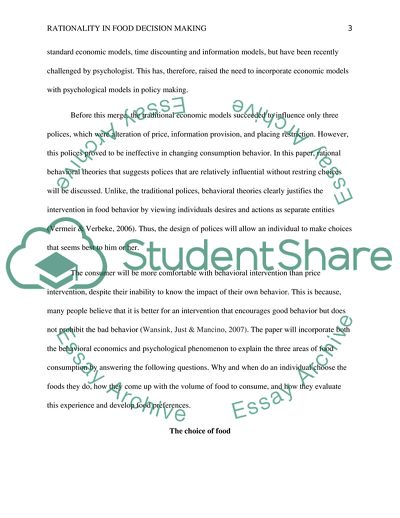Cite this document
(Rationality in Food Decision Making Research Paper Example | Topics and Well Written Essays - 3750 words, n.d.)
Rationality in Food Decision Making Research Paper Example | Topics and Well Written Essays - 3750 words. https://studentshare.org/family-consumer-science/1816002-rationality-in-food-decision-making-insights-from-behavioral-economics
Rationality in Food Decision Making Research Paper Example | Topics and Well Written Essays - 3750 words. https://studentshare.org/family-consumer-science/1816002-rationality-in-food-decision-making-insights-from-behavioral-economics
(Rationality in Food Decision Making Research Paper Example | Topics and Well Written Essays - 3750 Words)
Rationality in Food Decision Making Research Paper Example | Topics and Well Written Essays - 3750 Words. https://studentshare.org/family-consumer-science/1816002-rationality-in-food-decision-making-insights-from-behavioral-economics.
Rationality in Food Decision Making Research Paper Example | Topics and Well Written Essays - 3750 Words. https://studentshare.org/family-consumer-science/1816002-rationality-in-food-decision-making-insights-from-behavioral-economics.
“Rationality in Food Decision Making Research Paper Example | Topics and Well Written Essays - 3750 Words”. https://studentshare.org/family-consumer-science/1816002-rationality-in-food-decision-making-insights-from-behavioral-economics.


